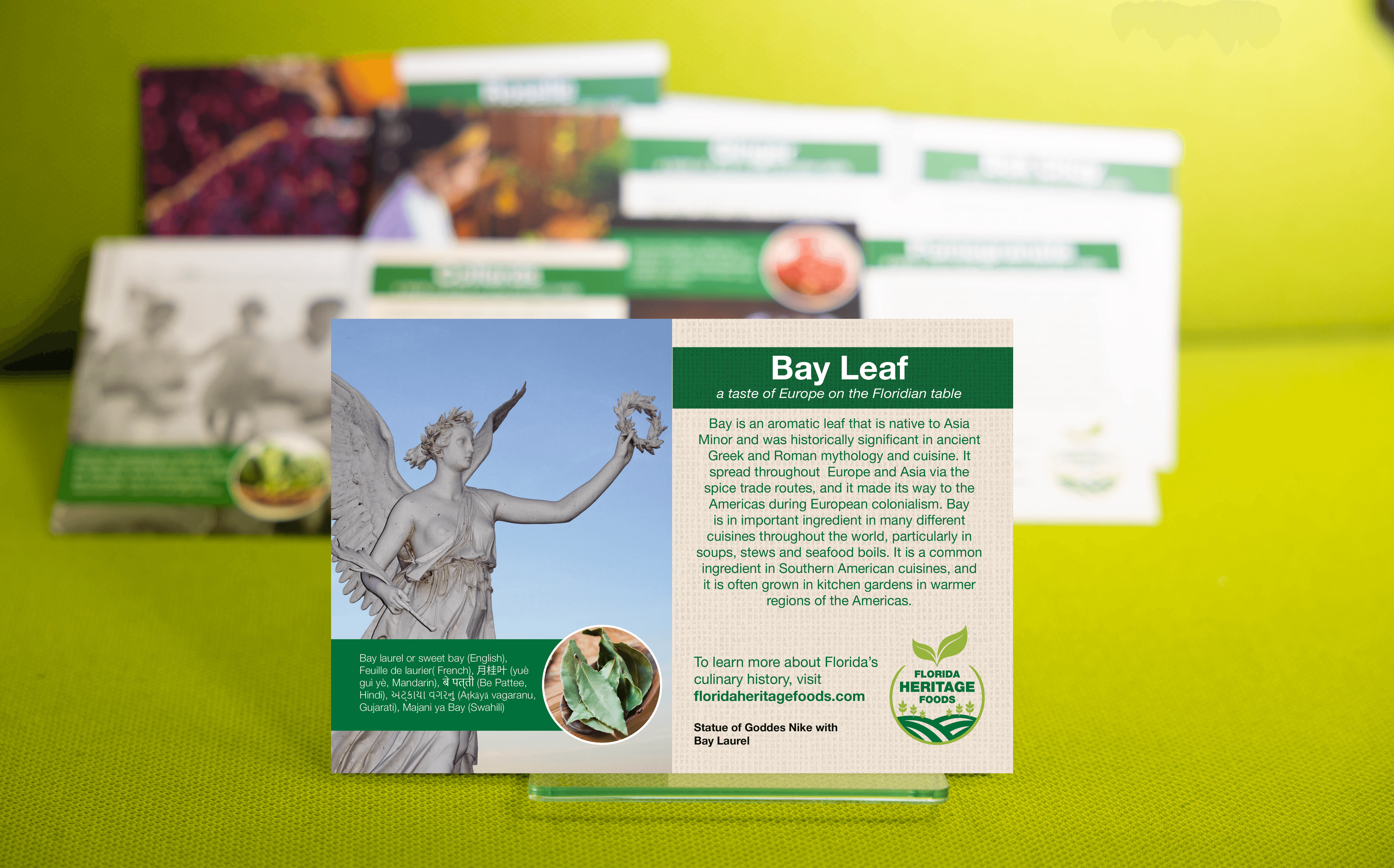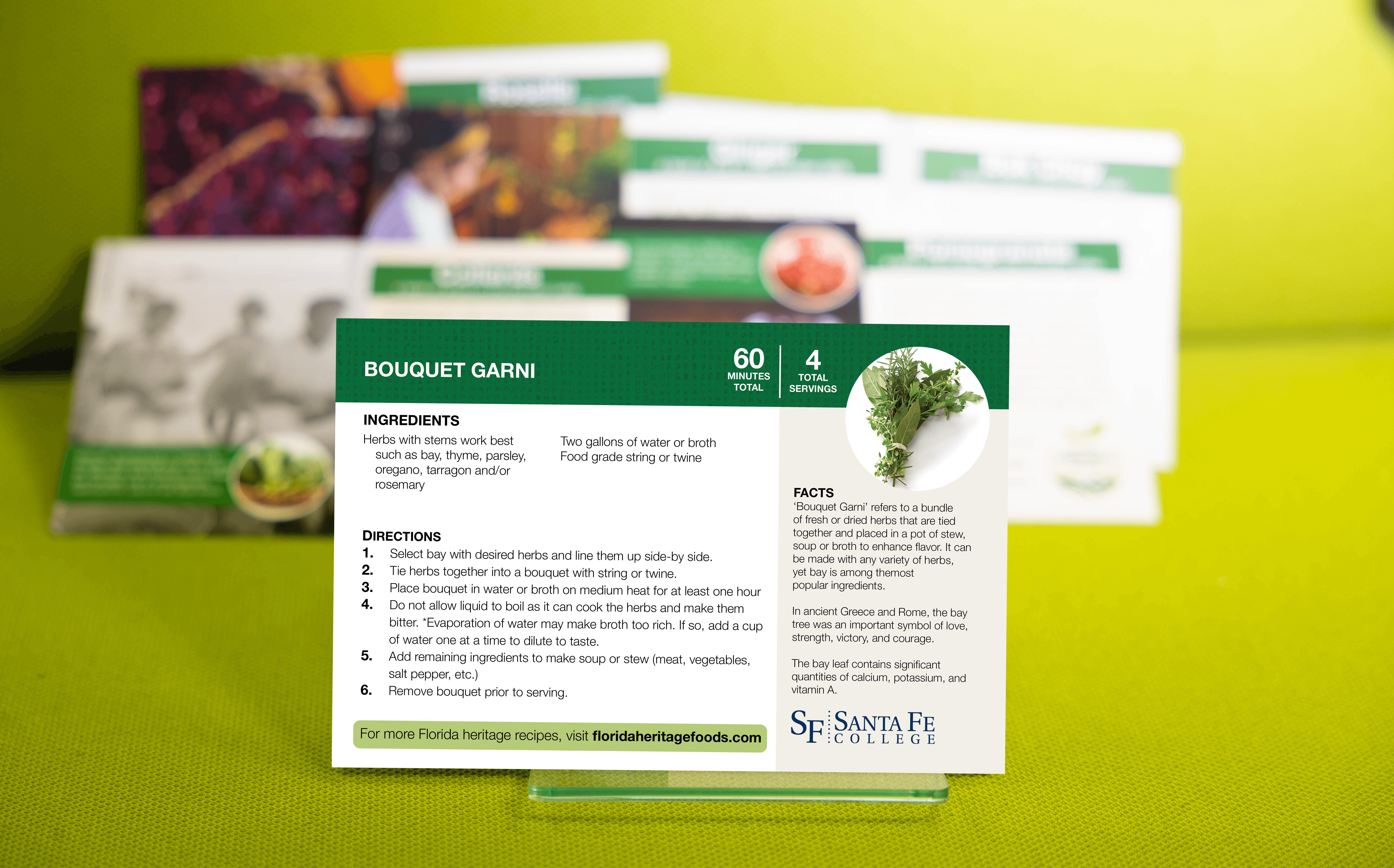Bay Leaf
Laurus nobilis

Bay laurel or sweet bay (English), Feuille de laurier( French), 月桂叶 (yuè guì yè, Mandarin), बे पत्ती (Be Pattee, Hindi), અટ્કાયા વગરનુ (Aṭkāyā vagaranu, Gujarati), Majani ya Bay (Swahili)
Bay is an aromatic leaf that is native to Asia Minor and was historically significant in ancient Greek and Roman mythology and cuisine. It spread throughout Europe and Asia via the spice trade routes, and it made its way to the Americas during European colonialism. Bay is in important ingredient in many different cuisines throughout the world, particularly in soups, stews and seafood boils. It is a common ingredient in Southern American cuisines, and it is often grown in kitchen gardens in warmer regions of the Americas.

The bay tree originated in Asia Minor, and it became an important part of Mediterranean cuisine dating to ancient Greece and Rome. Since the tree grows in warmer climates, the leaves were dried and brought to colder areas in Europe and Asia through trade. Bay was an important part of the spice trade between Asia and Europe, and it was brought to the Americas through European colonialism. Bay was not only infused into a variety of cuisines throughout the Americas, it was integrated into a variety of home gardens where it remains a common addition to kitchen gardens throughout warmer regions such as the Southern U.S.
Bay leaves played an important role in Greek and Roman history. The bay tree was an important symbol of love, strength, victory, and courage; this originates from the myth of Apollo and Daphne (who was turned into a bay tree.) Champions were often crowned with a wreath of bay leaves. The aromatic leaves were used as a flavoring in ancient Greek and Roman cuisines, and they are still used to flavor a variety of soups, stews, braises and pâtés throughout the world. Bay is popular in many Mediterranean dishes in southern France, Italy, and Greece. In India bay is used to flavor many rice dishes such as biryani and as an ingredient in garam masala. In the Philippines bay leaves flavor dishes such as menudo, beef pares, and adobo. Bay is important for making jerk chicken in the Caribbean. Today, bay is an important ingredient in many southern American dishes such as gumbo and in spice mixes for seafood boils.

Bay leaves are generally used whole, either dried or fresh and removed from the dish before consumption. They are less commonly used in ground form and may be blended with additional spices such as salt, celery seed, red and black pepper, paprika, mustard, mustard, cardamom, cloves, and ginger. Fresh leaves are very mild and do not develop their full flavor until several weeks after picking and drying. They are rich in calcium, potassium, and vitamin A.


Bay is a perennial that should be planted in well-drained soil in full sun to partially shady areas in October through March via cuttings or by transplanting; bay can be harvested throughout the year once established. To learn more about gardening with bay. To plan a heritage garden, download the ‘Planning a Florida Heritage Garden (PDF).’

Santa Fe College Partnered with Multiple Organizations in a Collaborative Effort to Bring Awareness of the Heritage Plants In Florida.
BY CULTURAL HISTORY
BY GROWING SEASON
DROUGHT TOLERANT PLANTS
Commitment to Equal Access and Equal Opportunity
Santa Fe College is committed to an environment that embraces diversity, respects the rights of all individuals, is open and accessible, and is free of harassment and discrimination. For more information, visit sfcollege.edu/eaeo or contact equity.officer@sfcollege.edu.
SACSCOC Accreditation Statement
Santa Fe College is accredited by the Southern Association of Colleges and Schools Commission on Colleges (SACSCOC). For more information, visit sfcollege.edu/sacscoc.
